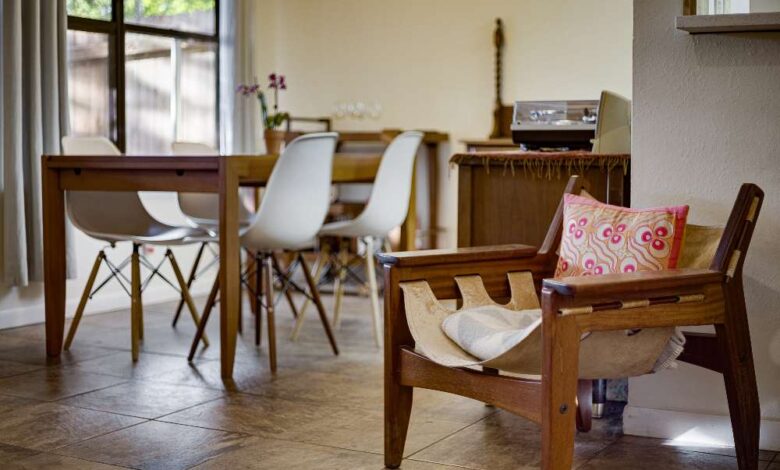Exploring the Future of Real Estate Marketing: The Impact of Drone Photography

In the ever-evolving landscape of real estate marketing, staying ahead often means embracing innovative technologies that enhance property visibility and appeal. One such technology that has revolutionized the industry is drone photography. By leveraging unmanned aerial vehicles (UAVs) equipped with high-resolution cameras, real estate professionals can capture stunning aerial views of properties, offering prospective buyers and investors a unique perspective that traditional photography simply cannot match.
The Rise of Drone Photography in Real Estate
Drone photography has emerged as a game-changer in the real estate sector, offering compelling benefits to both sellers and buyers. For sellers, it provides a powerful tool to showcase properties in their best light, highlighting features that are often obscured or overlooked from ground-level shots. Aerial views captured by drones can showcase expansive landscapes, architectural details, and the surrounding neighborhood, providing a comprehensive visual representation that appeals to potential buyers.
From a buyer’s perspective, drone photography offers invaluable insights into a property’s layout, orientation, and surroundings. This technology allows prospective buyers to assess factors such as proximity to amenities, neighborhood characteristics, and the overall condition of the property in a more immersive manner. By providing a bird’s-eye view, drone photography helps buyers make informed decisions without the need for multiple site visits, saving time and effort in the property search process.
Advantages of Drone Photography for Real Estate Marketing
Enhanced Property Visibility: Drone photography enables real estate listings to stand out in a crowded market. Aerial shots capture attention and generate interest, enticing potential buyers to explore the property further.
Comprehensive Property Presentation: Unlike traditional photography, which often focuses on specific angles and features, drone photography offers a holistic view of the property. This includes the layout, size, and surrounding environment, giving viewers a complete picture of what the property has to offer.
Highlighting Unique Features: Drones can capture unique features of a property that may not be immediately apparent from ground-level photography. This includes architectural details, landscaping, and scenic views that contribute to the property’s appeal.
Cost-Effective Marketing Tool: Despite initial investment in drone technology and photography services, the long-term benefits outweigh the costs. Properties marketed with drone photography tend to sell faster and at potentially higher prices due to increased interest and perceived value.
Improving Listing Accuracy: Drone photography helps in accurately representing the property’s size, condition, and location. This reduces misunderstandings between buyers and sellers and enhances transparency throughout the transaction process.
Applications of Drone Photography in Real Estate
Drone photography finds diverse applications across various sectors of real estate, including residential, commercial, and industrial properties. Here are some specific ways in which drones are used:
Residential Real Estate: Drones are commonly used to capture expansive estates, luxury homes, and properties with unique architectural designs. Aerial views help highlight property features such as swimming pools, gardens, and outdoor living spaces.
Commercial Real Estate: In the commercial sector, drones assist in showcasing office buildings, retail centers, and industrial complexes. Aerial photography provides potential tenants or investors with a clear perspective on building size, accessibility, and surrounding infrastructure.
Construction and Development: Drones play a crucial role in monitoring construction progress, conducting site surveys, and assessing property conditions. Builders and developers use drone imagery to document milestones, identify potential issues, and market future projects.
Vacation Rentals and Hospitality: Properties marketed as vacation rentals benefit from drone photography to showcase scenic locations, proximity to beaches or attractions, and panoramic views. Hospitality businesses use drone footage to promote resorts, hotels, and recreational facilities.
Regulatory Considerations and Safety Measures
While drone photography offers substantial advantages, it is essential to navigate regulatory requirements and safety protocols. Real estate professionals and drone operators must adhere to local laws governing UAV usage, including obtaining necessary permits, maintaining safe operating distances from people and property, and respecting privacy concerns.
Additionally, ensuring the competence of drone operators and selecting reputable photography services are critical factors in achieving high-quality aerial imagery. Professional drone operators possess the expertise to capture compelling shots while prioritizing safety and compliance with industry standards.
Future Trends and Technological Advancements
Looking ahead, advancements in drone technology continue to shape the future of real estate marketing. Innovations such as automated flight paths, 3D mapping capabilities, and virtual reality integration promise to further enhance the utility and appeal of drone photography in showcasing properties.
Virtual tours powered by drone-captured imagery allow prospective buyers to explore properties remotely, offering an immersive experience comparable to physical visits. This trend not only accommodates changing consumer preferences but also expands the reach of real estate marketing efforts to a global audience.
As the demand for visually engaging content grows, real estate professionals are increasingly leveraging drone photography to differentiate their listings and provide unparalleled insights into property offerings. By embracing this technology, industry stakeholders can stay ahead of the curve and elevate the standard of real estate marketing in the digital age.
Conclusion
In conclusion, real estate drone photography represents a transformative tool in the realm of marketing, enabling stakeholders to showcase properties with unprecedented detail and clarity. From enhancing property visibility and highlighting unique features to streamlining the buying process and fostering transparency, drones have redefined how properties are presented and perceived in the market.
As technological advancements continue to evolve, the integration of drone photography is poised to become even more integral to the real estate industry. By embracing innovation and harnessing the power of aerial imagery, real estate professionals can effectively navigate competitive markets, attract discerning buyers, and ultimately drive successful property transactions.
In essence, the future of real estate marketing is taking flight with drone photography, promising a new era of visual storytelling and enhanced consumer engagement in property transactions worldwide.



